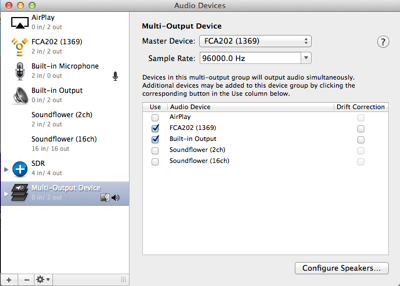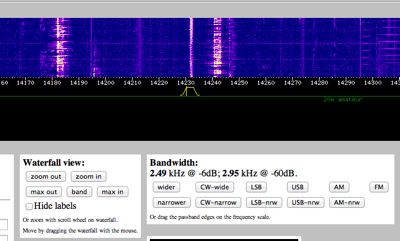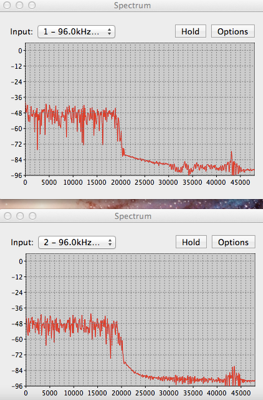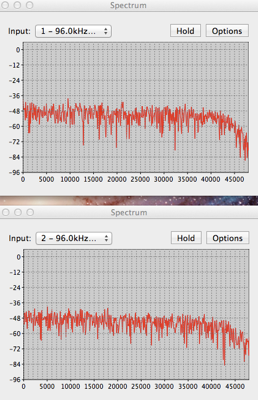This all ran well but the problem was that when I plugged the iMic in to the iMac headphone jack, I lost the audio output from the internal loudspeakers, and so could not monitor the audio signals or tune around the band without unplugging the iMic…
So how to output audio to multiple devices? Well there is a way. Open the utility Audio MIDI Setup, and chose to add a device (+ sign). Then chose Multiple Output Device, now select the outputs you want to receive the signals. Here's a screen shot:

In my case I was outputting the signals from Web based SDR radio at http://websdr.ewi.utwente.nl:8901.

and tuning to the SSTV frequency of 14230kHz - you can see a signal coming in.
I can now drive the iMic/iPad and listen via an Firewire audio interface, the FCA202, with a small battery powered loudspeaker plugged into the headphone jack. Or I can plug the iMic into the FCA202 headphone output to pick up the audio at the same time as it plays through the internal iMac loudspeaker.
LATER
I have had two or three crashes of Safari when listening to the radio I mentioned above, I have no idea why. To cure the problem I was forced to remake and select (Alt-Speaker Icon) the Multiple Output device and then restart Safari. Bug reports sent to Apple.


